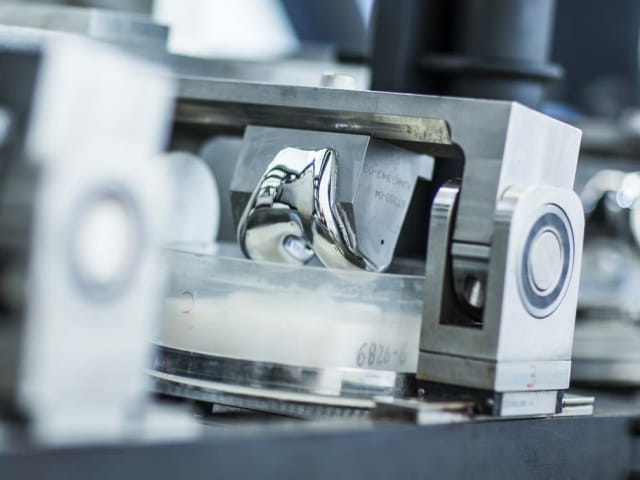Acute Particulate Characterization of Coated Drug-Eluting Vascular Stent Systems
Drug-Eluting Stents (DES) have greatly impacted treatment methods for cardiovascular disease over the past ten years. Patients receiving DES treatments have a significantly reduced risk of in-stent restenosis, but other risks, such as particulate matter generation, have caused concern in recent years.
The Challenge
Particulate matter can be generated by the manufacturing process or from the breakdown of any coating (e.g., hydrophilic coating) or from the stent platform, stent delivery system, or product packaging. If particles are introduced in the bloodstream during stent delivery or deployment, they may present an embolic risk to the patient.
The collection and characterization of particulates is a challenging process due to a number of factors. First, the particulates shed from stent coatings are typically very small. The 2010 FDA Guidance Document (Guidance for Industry and FDA Staff - Non-Clinical Engineering Tests and Recommended Labeling for Intravascular Stents and Associated Delivery Systems) recommends that the range for particulate characterization includes particles 10-50µm in diameter. Collecting particles of this size without restricting the recirculating flow loop requires creative problem solving. It is also very difficult to count and characterize particles that are nearly invisible to the naked eye.
Another challenge is the risk of particle contamination. It is important to make sure all particles that are shed from the DES are properly characterized, and it is just as important to make sure that only particles shed from the DES are characterized. Contamination risks are everywhere – probably the largest source of potential error with particulate characterization when using in-line laser counters is air bubbles within the media. The bubbles appear as particles and provide false positive readings. Other sources of potential error include particles shed from the system plumbing, from the air in the lab, and test media impurities.
Given these risks, a strategy must be developed to effectively collect and characterize only the particles of interest.
The Solution
Element has developed a way to ensure the particles of interest are collected effectively and analyzed independently, providing particle-specific information. The flow loop includes:
- Recirculation and heating system (8,9)
- Flow control valves (11,12)
- Upstream filter (13) to ensure particle-free media is introduced to the flow loop
- Y-fitting for deployment access (3)
- Physiologically relevant tracking fixture (4)
- Silicone vessel for device placement (5)
- In-line high performance coated (HPC) catch filter (7) located downstream.
The system is filled with High Performance Liquid Chromatography –treated (HPLC) water and equilibrated to body temperature before testing is performed. First, a clean HPC filter is used to collect particulate data from the flow loop system, giving us background information on potential particles and contaminants introduced by the system, not the device. Next, that filter is replaced with a new HPC filter, and a device is introduced, tracked, and deployed within the flow loop. After each deployment, the HPC filter is retrieved and stored for analysis. This process repeats itself until all devices have been deployed, and all corresponding filters have been retrieved and properly stored.
Element uses cutting-edge technology for the analysis phase of acute particle characterization. A Scanning Electron Microscope (SEM) is paired with Automated Feature Analysis (AFA) software to provide morphological and elemental data specific to each collected particle. The HPC filter surface material is important for proper analysis – gold-coated filters are used to observe organic particles, and carbon-coated filters are used to observe metallic particles in order to create acceptable contrast between the HPC filter and the particles as detected by the SEM.
Element personnel modify settings in the AFA software specific to the particles being characterized, as well as specify the number of filters being analyzed per run (up to 6 filters may be loaded into the SEM sample chamber at a time). The AFA software will analyze each HPC filter individually and gather large amounts of raw data including particle count, minimum diameter, maximum diameter, mean diameter, roundness ratio, compositional elements, compositional percentages, photos of each counted particle, and much more. Raw data can be organized and simplified as needed to display relevant results in the corresponding test report.
Conclusion
This analysis method provides the most detailed results possible. Instead of reporting only particle counts, this method produces completely individualized results that characterize and document each collected particle for morphology data, compositional data, and appearance/imaging. If any abnormal particles are found in the collected data, the corresponding particle image may be referenced to determine the origin of the particle. Another benefit of this method is that particles are physically captured onto the HPC filter and may be stored for future analysis or reference as needed.
Find related Resources



